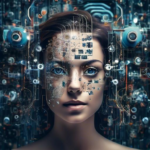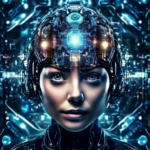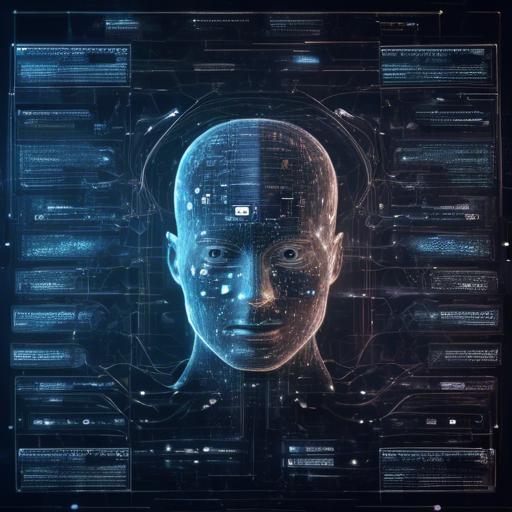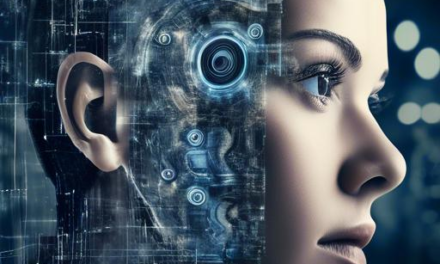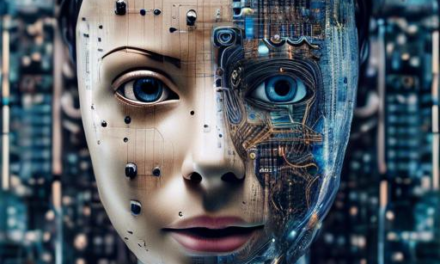In a world where imagination and technology dance hand in hand, the realm of image generation through artificial intelligence stands out as a captivating symphony. Picture this: machines conjuring stunning visuals from mere whispers of data, transforming abstract concepts into vibrant mosaics of color and form. It’s not wizardry; it’s the result of meticulous training and sophisticated algorithms working in exquisite harmony.
Welcome to “”—your gateway to understanding the fascinating process behind teaching computers to create images that rival an artist’s deft strokes. Whether you’re a curious beginner, an aspiring AI enthusiast, or a seasoned technophile looking to expand your horizons, this article promises to illuminate the pathways and parameters that guide machines in their creative quests.
Let’s embark on this enlightening journey together, where pixels and patterns come alive through the lens of artificial intelligence, and where every step forward holds the promise of unimaginable possibilities. Your guide awaits, with insights crafted not just to inform, but to inspire and support you on your voyage into the heart of machine creativity.
Table of Contents
- Understanding the Core Concepts of AI and Image Generation
- Choosing the Right Dataset for Your AI Model
- Preprocessing Images: The Key to Quality Inputs
- Building and Tuning Your Neural Network
- Enhancing Training with Data Augmentation Techniques
- Evaluating and Refining Generated Images
- Managing Computational Resources and Efficiency
- Addressing Ethical Considerations in AI Image Generation
- Future Trends and Innovations in AI Image Synthesis
- Concluding Remarks
Understanding the Core Concepts of AI and Image Generation
The rapidly evolving field of artificial intelligence (AI) has brought incredible advancements, particularly in the realm of **image generation**. Understanding these core concepts can elevate both novices and enthusiasts as they explore the intricacies of teaching machines to create vivid and awe-inspiring visuals.
At the heart of AI image generation lies the **neural network**. These computational models mimic the functionality of the human brain, allowing the AI to recognize patterns and generate images based on those patterns. Two primary types of neural networks dominate this space: **Convolutional Neural Networks (CNNs)** and **Generative Adversarial Networks (GANs)**. Each offers unique advantages and operates using different mechanisms, but both are essential for tasks like photo enhancement, artistic creation, and realistic image synthesis.
Key Concepts:
- Training Data: A vast collection of labeled images that the AI uses to learn patterns.
- Pixels: The basic units of an image that the AI manipulates to generate visual content.
- Feature Maps: Representations of different aspects of the images learned during training.
- Loss Function: A way for the AI to measure the accuracy of its generated images against the training data.
In the training process, **data preprocessing** plays a critical role. Images are often resized, scaled, or augmented to ensure the neural network can handle diverse data inputs efficiently. This step also helps in standardizing the dataset, which is pivotal for consistent training results. Moreover, employing diverse datasets enriches the model’s learning capacity, making it adept at creating a wide range of images.
| Concept | Description |
|---|---|
| CNN | Utilizes layers to preserve spatial dimensions and extract features. |
| GAN | Consists of two networks, Generator and Discriminator, competing to create realistic images. |
| Epoch | One complete pass through the training dataset. |
**Generative Adversarial Networks (GANs)** have particularly revolutionized the way we approach image generation. They operate through a creative yet competitive process involving two neural networks: the generator, which creates images, and the discriminator, which evaluates them. This tug-of-war forces the generator to produce increasingly realistic images over time.
Understanding these core principles doesn’t just help in developing advanced models; it brings clarity to the complexities behind AI image generation. Whether you’re an artist looking to harness AI for creative endeavors or a developer striving to push the boundaries of machine learning, grasping these fundamentals is your first step towards innovation.
Choosing the Right Dataset for Your AI Model
When embarking on the journey of training an AI for image generation, selecting the ideal dataset is paramount. The **quality**, **diversity**, and **relevance** of your data will have a profound impact on the performance and accuracy of your model. Here, we’ll delve into some key considerations to help you make an informed choice.
Diversity: Variety is crucial to ensure that your model can generalize well to different scenarios. Aim for datasets that cover a wide range of subjects, styles, and conditions. This is particularly important in image generation, where nuances in light, color, and texture play a significant role.
- Different perspectives and angles
- Various lighting conditions
- Multiple artistic styles
- Diverse subject matters
Quality: High-resolution images produce better results. Ensure that your dataset comprises clear, well-defined images. Blurry or low-resolution images can confuse the model, leading to inferior outputs. It’s also beneficial to preprocess the images to remove noise and improve overall quality.
The table below compares the attributes of popular datasets for image generation:
| Dataset | Resolution | Diversity | Best Use Case |
|---|---|---|---|
| COCO | High | Very High | General Image Generation |
| ImageNet | Medium | High | Object Recognition |
| MNIST | Low | Low | Handwritten Digits |
Size: A larger dataset provides the opportunity for your model to learn a broader range of features, but it also demands more computational resources and time. Striking a balance is key. If computational limitations are a concern, consider using data augmentation techniques to expand the effective size of your dataset without collecting additional images.
Relevance: The best dataset aligns closely with your specific application. For instance, training a model to generate images of human faces will require a set of diverse, high-quality photos of people. Misalignment between your dataset and your project goals can lead to suboptimal results.
Preprocessing Images: The Key to Quality Inputs
Before diving into the complex algorithms that drive AI-based image generation, it’s essential to underscore the importance of preprocessing images, as this critical step can drastically impact the quality of the outputs.
**Key Benefits of Image Preprocessing include:**
- Enhanced Accuracy: Clean, well-prepared datasets allow models to learn more effectively.
- Noise Reduction: Removing unnecessary variations in the image data ensures the model focuses on the essential features.
- Consistency: Standardizing image sizes and formats reduces variability, streamlining the learning process.
- Improved Performance: By feeding high-quality inputs into the AI, you can expect faster convergence and better performance.
Several techniques can assist in the preprocessing phase. **Resizing** images to uniform dimensions ensures that each image is fed into the network in a consistent manner, facilitating easier pattern recognition. **Normalization**, which involves adjusting pixel values to a common scale (typically 0 to 1), helps in speeding up convergence during training.
| Preprocessing Technique | Benefit |
|---|---|
| Resizing | Standardizes dimensions |
| Normalization | Adjusts pixel value scales |
| Noise Reduction | Removes unnecessary variations |
Adding steps like **cropping**, which focuses on the most relevant parts of an image, and **data augmentation**, such as rotating or flipping images, increases the diversity of the training dataset, thereby making the model more robust.
Ultimately, the foundation of effective AI training is rooted in well-prepared data. By investing time in comprehensive preprocessing, you’re setting the stage for an AI model that performs better and generates images that are significantly closer to what you envision.
Building and Tuning Your Neural Network
Crafting an efficient neural network for image generation involves multiple layers of decision-making and fine-tuning. The journey begins with selecting the right architecture. Whether you opt for a Convolutional Neural Network (CNN) or experiment with Generative Adversarial Networks (GANs), each choice has its unique merits. CNNs are highly effective in recognizing and processing visual data, while GANs shine in creating new, never-before-seen images. Whichever path you choose, ensure it aligns with your project goals and data specifics.
- **Layer Configuration:** Adjust the number of layers and neurons. More layers can capture complex features but may also lead to overfitting.
- **Activation Functions:** Popular choices include ReLU, Sigmoid, and Tanh. ReLU is widely used for its efficiency in handling large datasets.
- **Loss Function:** For image generation, Mean Squared Error (MSE) or Binary Cross-Entropy are commonly used.
Training is an iterative process. Split your data into training, validation, and test sets. While training, continuously monitor the network’s performance using key metrics like accuracy, precision, recall, and F1 score. This helps to diagnose issues early, be it overfitting or underfitting.
| Stage | Action | Metrics |
|---|---|---|
| Initialization | Set baseline architecture | – |
| Training | Feed data into the network | Accuracy, Loss |
| Validation | Adjust parameters and evaluate | Precision, Recall |
| Testing | Final performance check | F1 Score |
Hyperparameter tuning can be a game-changer. Adjust the learning rate, batch size, and number of epochs to see how they affect the outcome. Tools like grid search or random search can simplify this trial-and-error process. Remember, a smaller learning rate can yield more accurate results but requires longer training times, while a larger batch size stabilizes gradient estimates but can consume more memory.
Another crucial step involves incorporating techniques like dropout and batch normalization. Dropout helps prevent overfitting by randomly “dropping out” neurons during the training process, making the network more robust. Batch normalization accelerates training by normalizing the inputs for each layer, leading to faster convergence and higher accuracy.
These steps lay the groundwork for building a powerful, efficient neural network capable of generating high-quality images. As you iterate and refine, keep in mind the specific nuances of your dataset and objective to ensure the best results.
Enhancing Training with Data Augmentation Techniques
One transformative strategy in AI training, particularly for image generation, revolves around **data augmentation techniques**. These techniques enable the expansion of the training dataset without the need to actually collect more data, which can often be resource-intensive. By applying subtle modifications like rotations, translations, and noise additions, the AI model encounters a diverse set of images, which strengthens its learning process and adaptability.
Implementing data augmentation has several key benefits:
- Improves Model Robustness: By exposing the model to varied data, it becomes more resilient to changes and inconsistencies.
- Reduces Overfitting: Enhanced data diversity prevents the model from becoming too tailored to the training data, thereby improving its generalization to unseen images.
- Cost-Effective: It eliminates the need for extensive data collection, saving both time and financial resources.
Consider integrating these common data augmentation techniques into your AI training regime:
- Affine Transformations: Rotate, scale, and shear images to generate diverse perspectives.
- Color Jittering: Randomly alter the brightness, contrast, and saturation of images.
- Noise Injection: Add Gaussian noise to images to simulate varying lighting conditions and textures.
- Flipping and Cropping: Mirror images horizontally or vertically and apply random crops to focus on different parts of the image.
| Technique | Description |
|---|---|
| Rotation | Rotates the image by a specified degree |
| Translation | Shifts the image along the X or Y axis |
| Shearing | Slants the image along the X or Y axis |
| Noise Injection | Adds random noise to the image |
| Color Jitter | Changes brightness, contrast, and saturation |
Exploring these augmentation techniques not only diversifies your training dataset but also breathes new life into the model’s learning capacity, ensuring more robust and reliable performance. Experiment, adapt, and observe the shifts in your image generation results to uncover the full potential of data augmentation.
Evaluating and Refining Generated Images
As we delve deeper into the world of AI image generation, the next crucial step is assessing the output produced by our models. **** entails both qualitative and quantitative methods. It ensures that the AI’s creations meet certain standards and continuously improve over time.
One way to critically evaluate the images is through **human judgment**. This involves having a group of individuals review the outputs and provide feedback on various aspects like realism, creativity, and relevance. This feedback can be captured using simple scales such as:
- Realism: Poor – Acceptable – Excellent
- Creativity: Conventional - Innovative
- Relevance: Off-topic – Somewhat relevant – Highly relevant
In addition to human evaluation, there are several **quantitative metrics** that can be utilized. These include:
- **Inception Score (IS)**: Measures the quality and diversity of the generated images.
- **Frechet Inception Distance (FID)**: Assesses how close the generated images are to real ones in terms of features extracted by an Inception v3 model.
Once the feedback and scores are collected, it’s time to focus on **refining the model**. This can involve tweaking the neural network architecture, playing with hyperparameters, or incorporating more training data. Here are some crucial areas to look at:
- **Data Augmentation**: Expanding the training dataset to include more variety.
- **Network Adjustments**: Fine-tuning layers and parameters for better performance.
- **Regularization Techniques**: Implementing dropout or batch normalization to prevent overfitting.
An iterative process of evaluation and refinement can be visually represented as follows:
| Step | Action |
|---|---|
| 1 | Generate Images |
| 2 | Collect Feedback |
| 3 | Analyze Metrics |
| 4 | Refine Models |
| 5 | Repeat Cycle |
By embracing this cycle of evaluation and refinement, we ensure that the AI doesn’t just stagnate but evolves to produce increasingly sophisticated and accurate images.
Managing Computational Resources and Efficiency
When training AI for image generation, the effective management of computational resources and ensuring operational efficiency are critical. Here are some key points to consider:
- **Choose Optimal Hardware**: Investing in high-performance GPUs can significantly reduce training time. GPUs are tailored for the parallel processing required in deep learning tasks, making them a vital component of efficient AI model training.
- **Resource Allocation**: Proper allocation of memory and processing power is essential. This involves balancing between available resources and demand, which can be optimized using cloud-based solutions such as AWS, Google Cloud, or Azure.
- **Batch Processing**: Larger batch sizes can accelerate training but require more memory. It’s crucial to find a balance between batch size and available GPU memory to maximize performance without running into resource limitations.
**Model Optimization Techniques**:
- **Parameter Tuning**: Fine-tuning hyperparameters like learning rate, dropout rates, and layer sizes can improve both accuracy and efficiency. Hyperparameter tuning can be manual or automated using techniques such as grid search or Bayesian optimization.
- **Model Pruning**: Pruning unnecessary weights after initial training phases can help to speed up inference times and reduce model complexity without significantly compromising accuracy.
- **Quantization**: By reducing the precision of the model weights (e.g., from 32-bit floating point to 8-bit integer), you can achieve faster computations and lower power consumption, which is particularly useful for deploying models on edge devices.
**Comparison of Computational Resources**:
| Resource | Pros | Cons |
|---|---|---|
| High-Performance GPU | Fast processing, parallel computations | High cost, power consumption |
| Cloud Solutions | Flexible, scalable, cost-effective | Ongoing costs, data security |
| Edge Devices | Lower latency, offline capabilities | Lower power, reduced computational capacity |
**Operating Efficiency Tips**:
- **Data Augmentation**: Ensure that training data is diverse and covers various scenarios, which helps to improve model robustness and reduces the need for excessively large datasets.
- **Regular Monitoring**: Continuously monitor training progress and resource usage. Automated tools and dashboards can help identify inefficiencies and bottlenecks in real-time.
- **Distributed Training**: For extremely large datasets and complex models, distributed training across multiple GPUs or machines can drastically cut down training time while making efficient use of resources.
Addressing Ethical Considerations in AI Image Generation
As we delve into the fascinating realm of AI-driven image generation, it is pivotal to consider the **ethical implications** that arise from such powerful technology. While artificial intelligence engenders a myriad of opportunities, it can also pose substantial ethical dilemmas that must be addressed to ensure responsible usage.
One crucial aspect to contemplate is the **potential for misuse**. AI-created images hold the capacity to produce convincing yet entirely fabricated visuals, which could inadvertently perpetuate misinformation or be intentionally corrupted for nefarious purposes. To mitigate this risk, developers can incorporate validation mechanisms to discern generated content from authentic imagery.
Another ethical concern revolves around **bias in training datasets**. When training AI models, the quality and diversity of the data they are exposed to can significantly influence the outputs. If the training datasets lack diversity or reflect societal biases, the AI may inadvertently replicate and even amplify these biases in the generated images. Therefore, it’s imperative to curate balanced and representative datasets, alongside continuous monitoring and adjustments to the training process.
Ensuring the **privacy and consent** of individuals depicted in training images is equally pressing. The unauthorized use of personal photos in training datasets raises privacy issues and can lead to legal repercussions. Adopting anonymization techniques and obtaining explicit consent can help navigate these challenges effectively.
Best Practices for Ethical AI Image Generation
- Transparency: Clearly articulate the presence and purpose of AI-generated images.
- Diverse Training Data: Use inclusive datasets to minimize bias.
- Privacy Protection: Ensure all data used respects privacy laws and consent regulations.
- Ethical Guidelines: Develop and adhere to ethical standards for AI image generation.
| Ethical Concern | Best Practice |
|---|---|
| Data Bias | Incorporate diverse datasets |
| Misuse Potential | Add validation mechanisms |
| Privacy | Consent and anonymize data |
| Transparency | Disclose AI usage |
Future Trends and Innovations in AI Image Synthesis
are truly awe-inspiring, promising to transform digital art, social media, and even practical applications like medical imaging and autonomous driving. AI models are becoming more sophisticated and capable of generating hyper-realistic images, driving a paradigm shift in how we perceive and create visual content. Below, we explore some of the most exciting directions in this burgeoning field.
- Enhanced Realism: As Generative Adversarial Networks (GANs) evolve, their outputs are becoming increasingly indistinguishable from real photos. Future iterations may refine this capability even further, reducing any remaining artifacts that give away synthetic nature. This has profound implications for industries like filmmaking and virtual reality, where seamless integration of real and virtual elements is crucial.
- Diverse Style Transfer: Style transfer technology, which allows AI to mimic the artistic style of specific painters or genres, is also advancing. In the coming years, these tools will likely support more nuanced and personalized style adaptations, enabling users to imprint their unique flair on generated images effortlessly.
- Interactive Generation: Another exciting trend is the move toward more interactive image generation. Imagine a future where artists can converse with AI, refining their creations in real-time through intuitive interfaces. This merges the precision of digital tools with the spontaneity of human creativity, opening new avenues for artistic expression.
Let’s also delve into how these advancements intersect with other technologies.
| Technology | Impact on AI Image Synthesis |
|---|---|
| Quantum Computing | Accelerates training times and enhances computational efficiency. |
| 5G Connectivity | Enables rapid deployment and use of AI models on mobile platforms. |
| Augmented Reality | Facilitates real-time integration of AI-generated images into physical environments. |
Moreover, ethical considerations are gaining prominence. As AI becomes more adept at producing lifelike images, the potential for misuse, such as deepfakes, also increases. Emphasizing transparency and developing robust verification tools will be vital as we march forward. The innovation landscape requires both creativity and a commitment to ethical guidelines, ensuring AI serves as a force for good.
It’s an exhilarating time for AI image synthesis, with possibilities that not long ago might have seemed straight out of science fiction. As we look ahead, let’s embrace these advancements with both enthusiasm and responsibility, fostering a future where human and AI creativity flourish together.
Concluding Remarks
mastering the basics of training AI for image generation is a challenging yet rewarding journey. By understanding the principles and techniques discussed in this article, you are well on your way to unlocking the full potential of artificial intelligence in creating stunning visuals. Remember to keep experimenting, pushing boundaries, and never giving up on your quest to harness the power of AI for artistic expression. The possibilities are endless, and with dedication and perseverance, you can truly unleash the magic of AI in your creative endeavors. So, go forth with confidence and create wonders with your newfound knowledge. The future of image generation is in your hands – embrace it with open arms and let your imagination soar!







